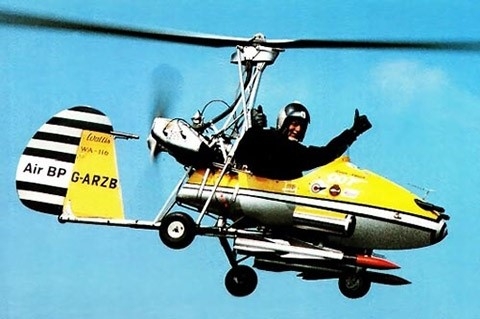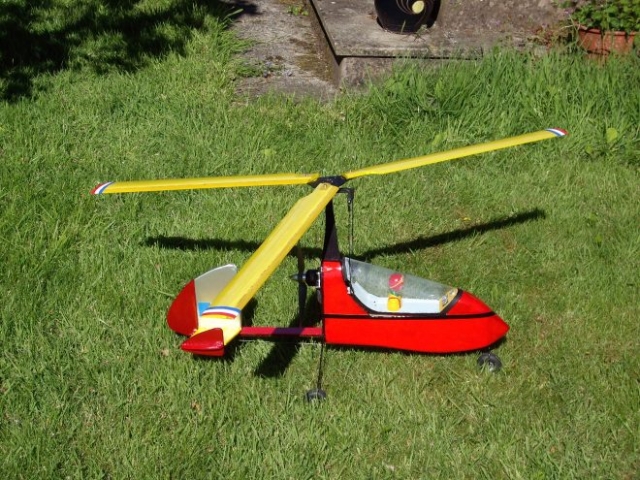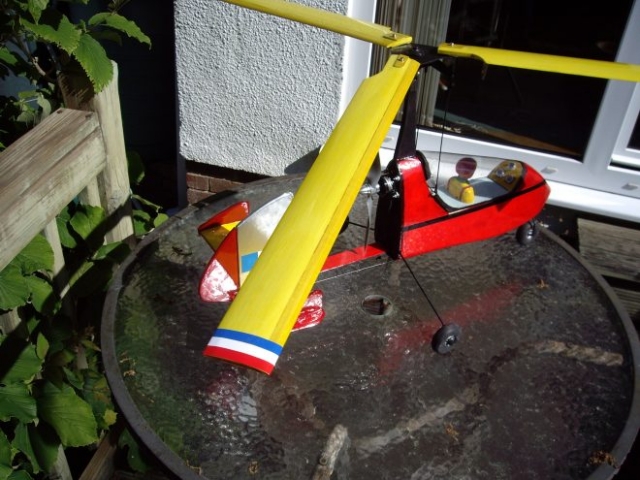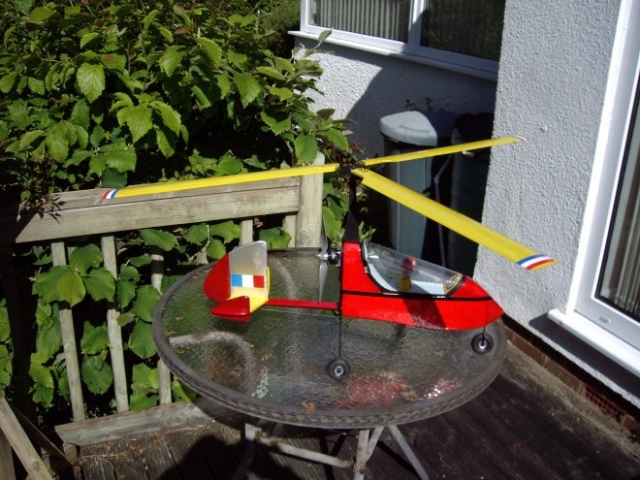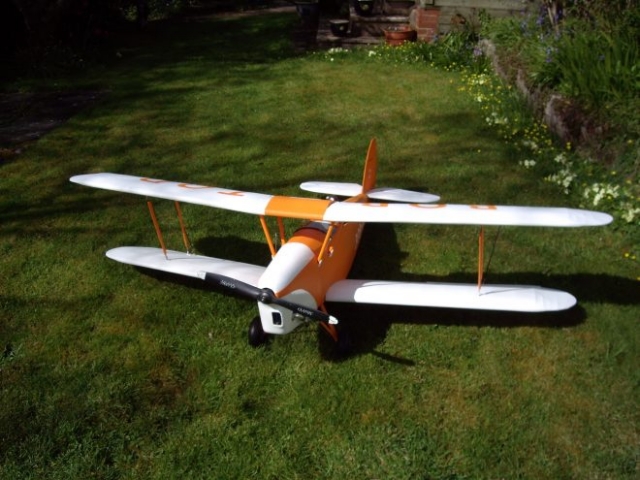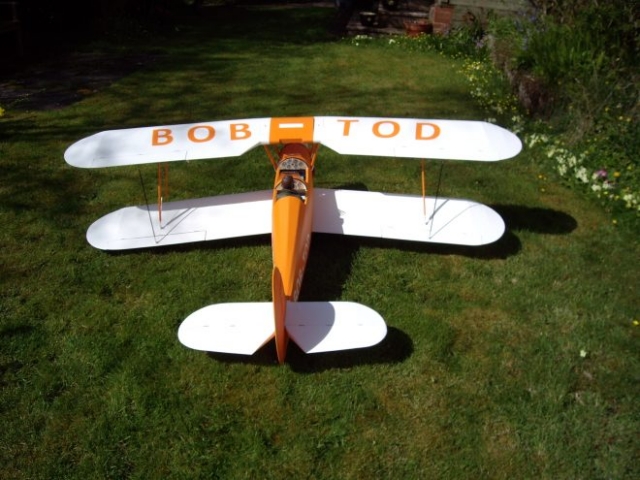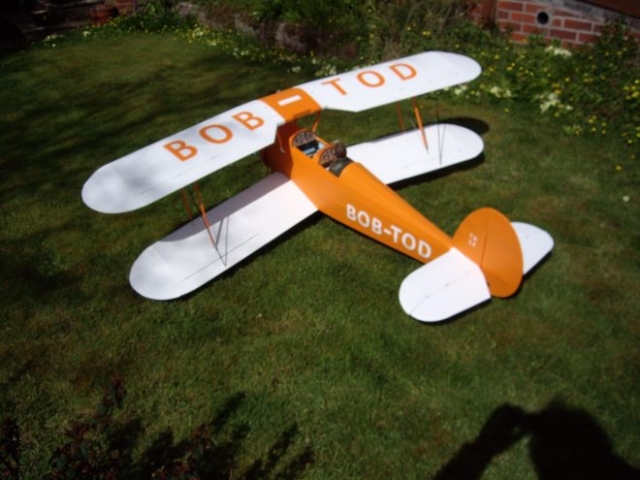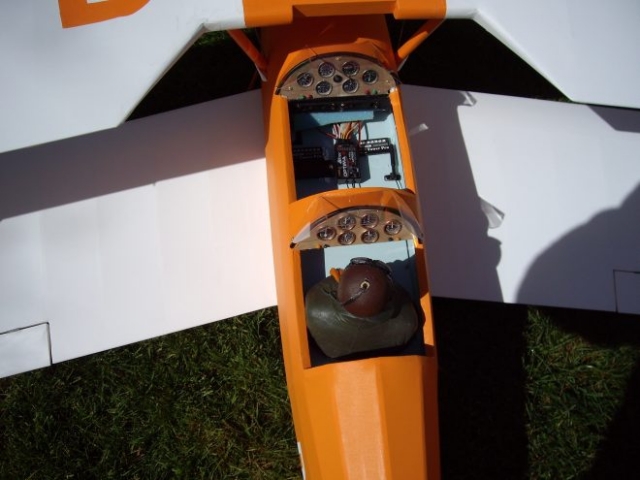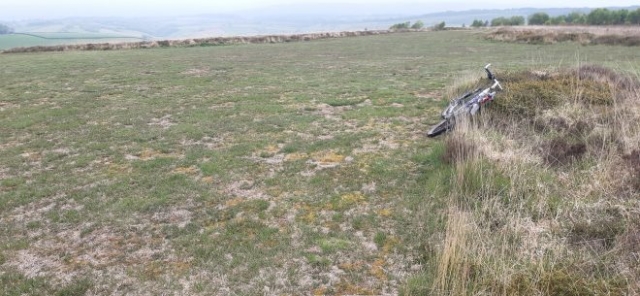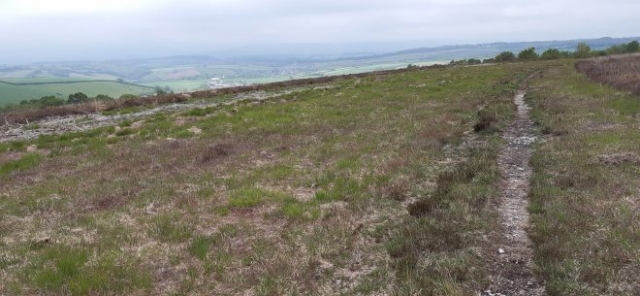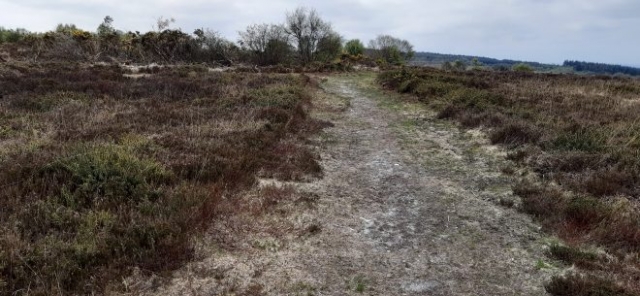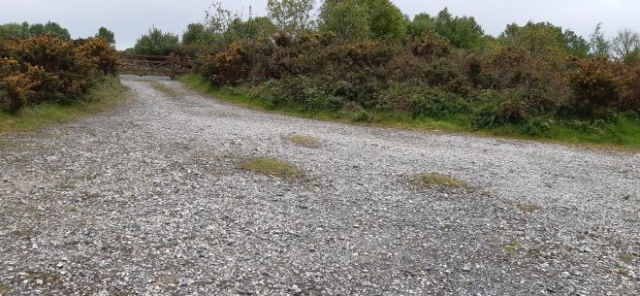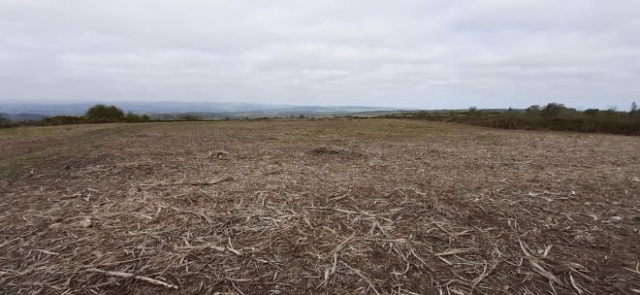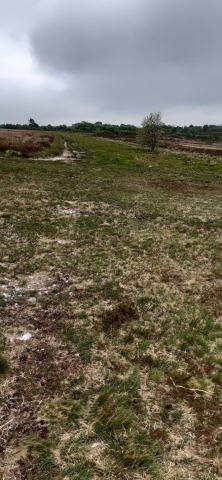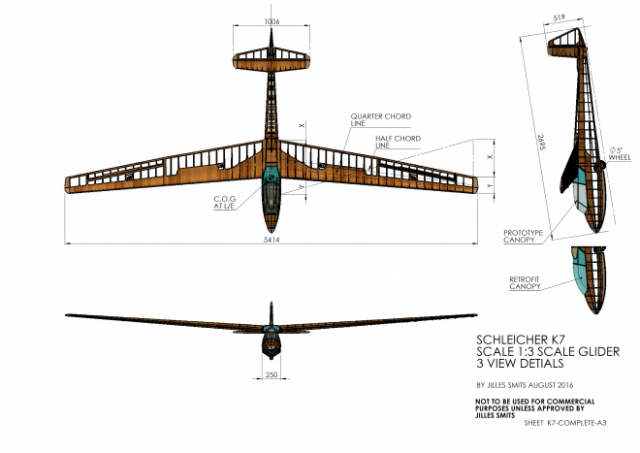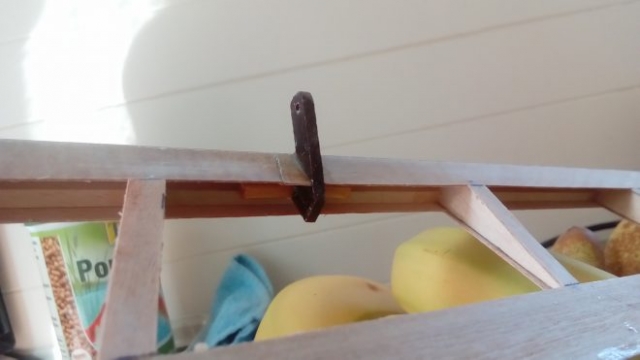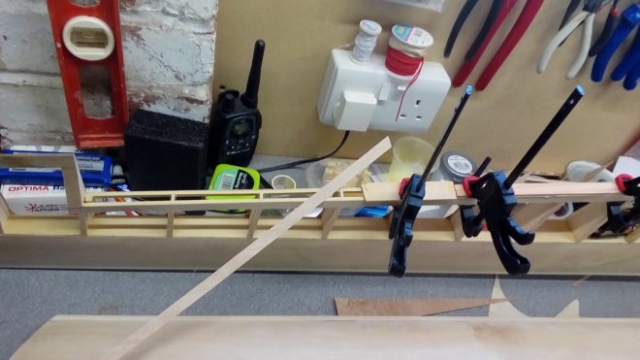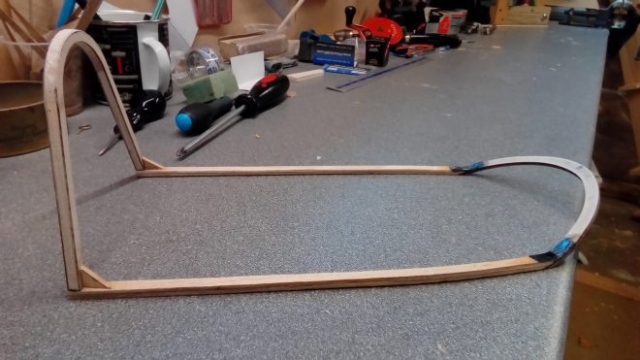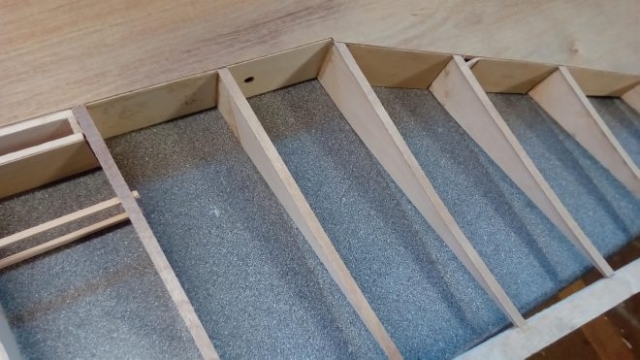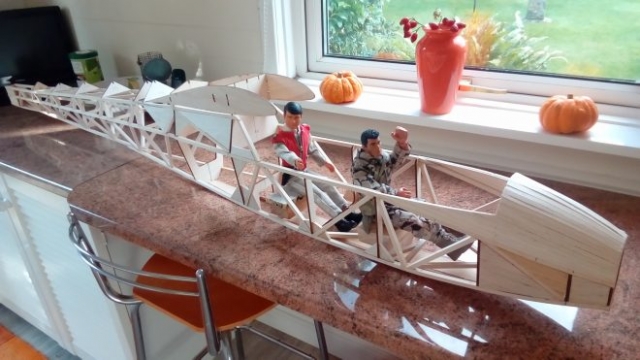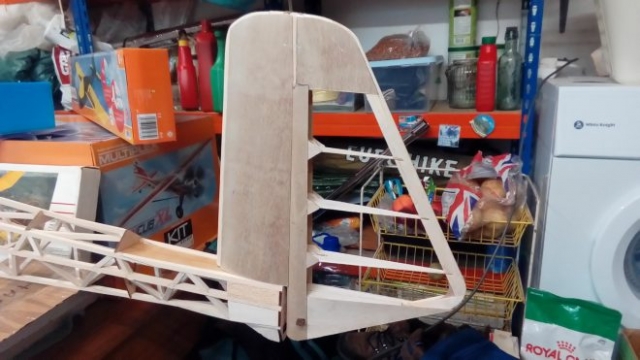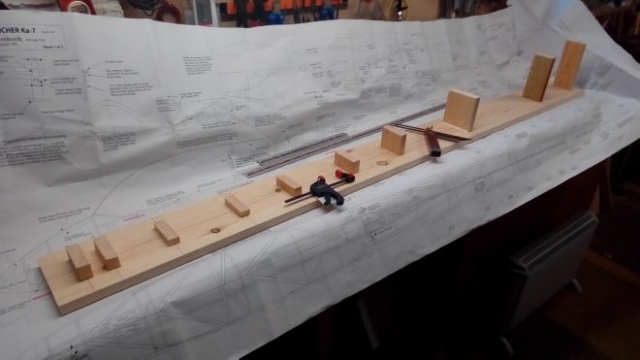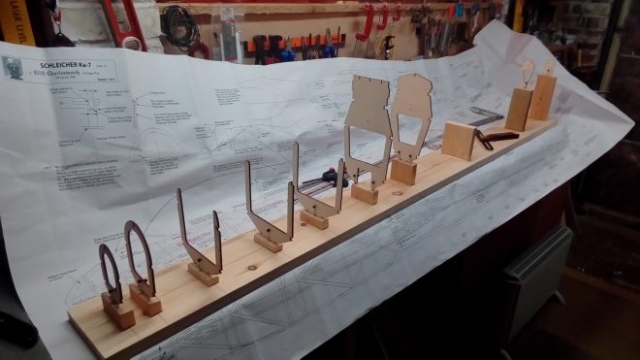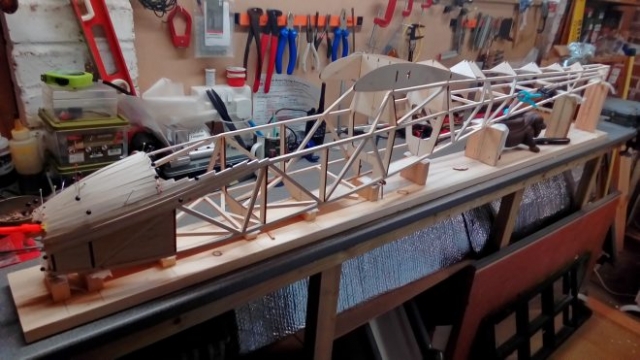Chris’s SZD Cobra update
Some more intriguing photo’s from Chris
A bit more progress: The full size had a all flying tailplane, I was going to do the same, but with such a small bearing width 19mm, and a tailplane at 900mm, I couldn’t stop the tailplane wobbling, at the tip, well not enough for me.
Not a problem, fix the tailplane and have a elevator, so I measured and cut out the elevator, problem no2; the elevator was going to be top hinged, 15mm at the center, tapering to 3mm at the tips. It gave a nice curve, OK when on the center line, but when you try to go down or up, the tips want to move away from the tailplane.
Plan C; split the elevator in the center, and operate with 2 servos, or make a new elevator with the top surface level, went with a split elevator.
I have made the wing spars, 2mm ply with carbon on one side, a center foam core, then carbon toes laid on top of the foam, top & bottom. The spar was then glued into the foam cores, balsa was then glued on top of the toes, so that this could be sanded down to the wing profile. Glass cloth was placed on the foam with epoxy, obechi verneer, placed on top, then epoxy brushed on top of the veneer, then tissue paper placed on the wet epoxy, mylar sheet then placed on top, and the whole lot placed in a vacbag.
Check out the photos
Chris
Keeping your Tech Powered
If some newspapers are to believed, we could be facing power cuts when energy staff go off sick. Most of us have an increasing dependence on our laptops and smartphones to keep in touch with friends, families and news. Typically, phones will need a recharge after a day and a laptop possibly after 3 -7 hours. however, not all is lost with enterprising modellers as many phones and laptops can be powered from a USB lead.
Our cars will have a 12v accessory socket – I still call it the cigar lighter socket
Another visit to L.H

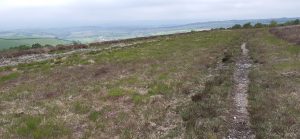
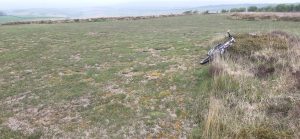 I had a cycle up to “The field” on Monday and was pleased to see that is still in good condition. With the reduced motor traffic about, I didn’t see any evidence of the trail bikes about. I didn’t see any walkers or dogs either. The gorse is still very cropped back and although the strip has grown slightly, it is ready for flying as soon as we get the release from lock-down.
I had a cycle up to “The field” on Monday and was pleased to see that is still in good condition. With the reduced motor traffic about, I didn’t see any evidence of the trail bikes about. I didn’t see any walkers or dogs either. The gorse is still very cropped back and although the strip has grown slightly, it is ready for flying as soon as we get the release from lock-down.
A build update from John
From John.
Ailerons have now been cut out having been built in with the main wing structure. There is a clear gap to cut to and it was a simple job. Then the open structure at cut edges is covered with 0.4 ply again straight forward. The aileron horns were cut per plan from hard 2mm fibre board and slotted neatly on the spar with epoxy.
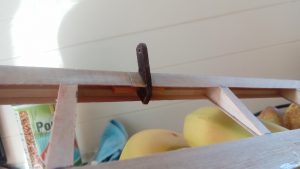
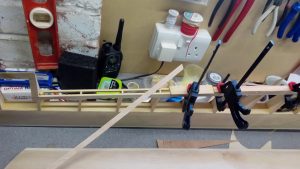
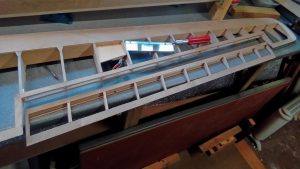
PS: John; where do those melons and potatoes in the background go. Are you building a transport glider to drop food off for the shielded? 🙂
Joe’s Projects
Joe emailed me a couple of his projects, the Stampe that is ready for maiden flight ( ¼ scale) power is a 38cc four stroke petrol engine.( AUW 14.5 lbs.) The racing cyclist almost ready to race but ran out of paint. AUW 20oz. 180watts of power, should be ok.( Joe’s own design ) !!!
I hope that we get to see the maiden flight this year – the photos look superb
A view of the field
I guess like most other members, I am missing the trip up to Little Haldon to get some flying in and meet up. With flying and meeting up off the agenda for a while, I decided to get my MTB out and cycle up to LH to take in the views. The steepest part of the climb was going out of Dawlish but once out of town the gradient reduced to a steady pant and luckily that bitter north wind was behind me. Not much traffic about although once joining the Teignmouth top road, Bsomthing, there were a few enthusiastic motors and bikes making the most of the otherwise quiet road. Turning off at the Golf course (just the groundsmen about), I made my way around the edge of the course to the gorsed moor except there is a lot less gorse than when I last went up. So much less that I initially couldn’t find the bridleway that runs along the bottom of our strip.
However, once I reached the strip I was again pleasantly surprised that the strip was in good condition and not overgrown. The wet winter seems to have filled in many of the deeper potholes and it looks ready for take-off. Carrying on to the car park and that path was also in very good condition with I think fewer ruts. Just a dog walker car in the lay-by and a fly-tipped chest of drawers (a handy tool chest) and some kitchen drawers further along the lane.
Although not flying today and without Cliff filming his virtual Corona maiden flight, it was good to just enjoy the views over to Dartmoor.
John’s Ka7 Build Update 3
John continues to be busy in the workshop and has provided us another interesting update with photos. Over to you John:
Still working on the wings, I did not realise just how much construction was involved, I will sometime conduct a survey on exactly how many separate items were needed to complete each wing, could be surprised! Also how gradually the weight increases. Picking up the basic wing structure a month or 2 back I think “oh that feels light”, however as you keep adding pieces, balsa, ply, servos, air-brakes, linkages and cable plus the glue your opinion begins to change! Then there is still the covering…
First pic.
This shows LE being added, the trigger clamps have been thoroughly used throughout the build, really useful especially as you can place them in position and tighten with one hand whilst holding the item with the other.. Also see all 0.4 ply sheeting now on, thanks to Mike Roberts for some advice there, plus 0.4 ply rib capping and the gussets. Gluing sheet and capping was achieved by applying white glue to both surfaces and allowing to dry for about half to three quarters of an hour depending on ambient temperature then placing in position and ironing on. This gave an instant grip, I used a domestic iron on the 2 dot setting, no need to hold a curved piece as in the rib capping.
2nd Pic
Completed 2 piece canopy. The forward canopy glazing is preformed for the K7 and you cut to fit the frame and glued on with canopy glue. The rear glazing used A4 stationary separation sheet as used in a work folder, a good thickness to be firm but still flexible and super clear, from Axworthys stationers. Note that the wing does not meet at the L Edge route and the space produced is glazed too, giving the full size pilot more visibility. I have to insert an anti crush dowel across this space to minimize damage should the wings be forced forward during an abrupt arrival, a hole will need to be made in both sides of the rear canopy to allow this, should have been done before gluing perspex to the frame I reckon!
Next job carving and sanding 4 mtrs of LE.
.John
Keeping our Tech Powered
If some newspapers are to believed, we could be facing power cuts when energy workers increasingly become ill. In these times of self isolation, we are becoming increasingly dependant on our Smart Phones and Laptops to keep in touch with friends, family and news as well as other DSSC members. With Smart Phones needing a recharge each day and laptops needing a charge after about 3 – 6 hours, an extended outage could be problematic. However, RC modellers are a resourceful bunch so all is not lost. Most modern tech can be powered or charged from a USB source.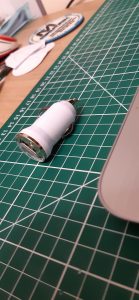
Our car 12v accessory socket or as I still call it – the cigar lighter socket can power a USB adaptor. I have one as shown that will accept a variety of USB leads to suit different phones. Some recent cars will also have a USB socket that can recharge. I know the engine will probably need running but the heat may be useful to grill a rasher or two.
When it comes to the laptop, many current models will have a USB type C socket to take the small oval USB plug as shown below. The USB-C port / socket can be used to power or charge the laptop (the original USB-A on your laptop will not do that). So again the car can provide some power and perhaps fry an egg.
This is where us electric guys have some alternative power sources – our LiPo’s. A UBEC can normally output 5V from a range of LiPo voltages (the ones I looked at today went from 2S to several S’s) to power the receiver but as 5V is the same as USB voltage, so with a bit of soldering to a USB lead with the appropriate plug / socket on the other end of the lead and a connector to match your battery pack – we have power for our phones or laptops. You may prefer to keep the servo connector on the BEC for the future and make up a servo socket to USB lead adaptor.
The easiest way to to connect a USB plug or socket is to cut an existing lead and connect the red and black wires (via the servo adaptor) to the output from your UBEC. If it is not clear which are the 5V and gnd wires, use a multi meter to check against the USB outer pins next to the casing. Remember test that you have the correct polarity and 5V voltage before connecting your tech.
Like all helpful suggestions – do this at your own risk and have a look around YouTube to see how others have done this.
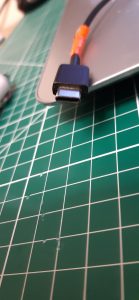
Li-Po Storage Charge
I saw a good tip on the WWW recently – To charge or discharge all our LiPo’s to a storage charge as it looks as though they will not be used for some time. I wont go through the reasons as I guess our members have more LiPo experiences than me. Anyway, it prompted me to check and I found a couple at full charge – in anticipation of some improving weather, a couple at storage and others at low charge after some recent bench testing.
